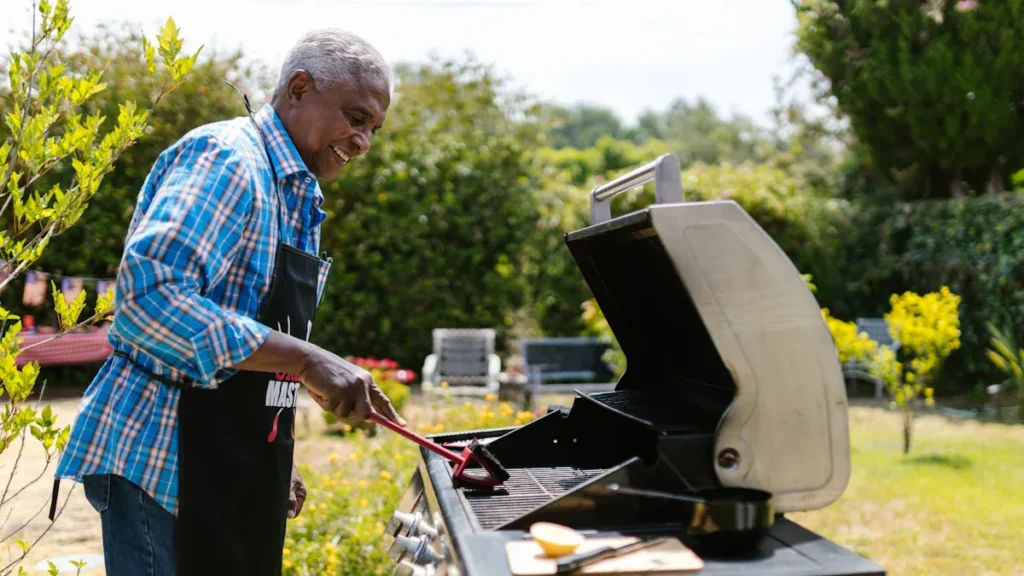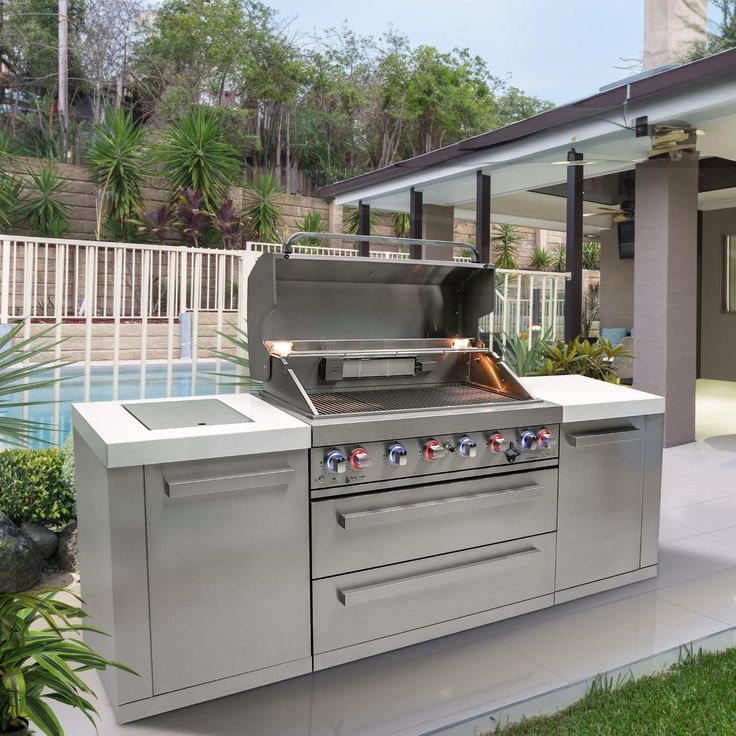Your grill is an investment, not just a weekend tool. Whether you cook every week or only on special occasions, stainless steel grates are the heart of your barbecue. But here’s the problem — many grill owners overlook basic grate care, leading to rust, residue, and uneven heat. Over time, that can ruin both flavor and performance.
Taking care of your stainless steel grill grates helps them stay non-stick, resist rust, and last for years. With the right cleaning, oiling, and storage habits, you can keep your grates shining and your food tasting great.
A clean grate means better heat flow and more even cooking. Once you understand the simple science behind stainless steel care, you’ll never look at your barbecue the same way again. Let’s walk through how to keep those grates strong, shiny, and ready for your next cookout.
Why should you choose stainless-steel grates over other materials?
Stainless steel grates are popular for a reason. They resist rust, handle high heat, and clean easily. But how do they compare to cast iron or porcelain?
Stainless-steel grates are durable, rust-resistant, and easy to clean, making them ideal for both beginners and experts. They don’t need as much seasoning as cast iron and can handle years of use without flaking or chipping.
Comparing grate materials
| Material Type | Durability | Maintenance | Heat Retention | Rust Resistance |
|---|---|---|---|---|
| Stainless Steel | Excellent | Low | Good | High |
| Cast Iron | High | High | Excellent | Low |
| Porcelain-Coated Iron | Medium | Medium | Good | Medium |
Stainless steel grates heat up fast and deliver consistent searing. They’re also lighter than cast iron, making them easier to handle during cleaning. While cast iron provides a deeper sear, stainless is far more forgiving if you forget to oil it after each use.
For those who grill outdoors year-round, stainless steel performs best under changing weather conditions. It doesn’t crack like porcelain or rust like iron. That’s why top gas grill brands — including Holagrills — design their premium models with 304 stainless steel grates.
How often do you need to clean stainless-steel grill grates?
If you grill regularly, it’s easy to forget post-cooking cleanup. But it matters.
You should clean your stainless-steel grates after every cooking session and deep-clean them every few months. Regular cleaning stops residue buildup, protects against rust, and keeps your food tasting pure.
Simple cleaning frequency guide
| Usage Level | Cleaning Frequency | Type of Care |
|---|---|---|
| Daily / Weekly | After each cook | Light brushing, oil coating |
| Monthly | Once per month | Deep cleaning with soap |
| Seasonal | Every 3–4 months | Re-oil, check for corrosion |
After each grill session, allow the grates to cool slightly, then brush off any food remains. Once cooled, apply a light coat of high-smoke-point oil (like canola). For deep cleaning, remove the grates, soak them in warm soapy water, scrub, rinse, and dry fully before oiling again.
Stainless steel’s strength lies in its passive film — a thin layer that prevents rust. Frequent cleaning helps maintain that layer. Avoid harsh abrasives, which can scratch and weaken the steel’s natural protection.
What tools and materials are best for cleaning stainless grill grates?
Not all brushes or tools are equal. Some can scratch, bend, or even leave metal shavings behind.
Use a bristle-free grill brush, microfiber cloths, and high-temperature oil to safely clean stainless steel grates. These tools protect the surface while removing residue and maintaining shine.
Recommended cleaning tools
| Tool | Purpose | Notes |
|---|---|---|
| Bristle-free grill brush | Remove food bits | Avoid wire bristles |
| Silicone basting brush | Apply oil evenly | Heat resistant |
| Microfiber cloth | Wipe clean | Gentle on surface |
| High-smoke-point oil | Protects from rust | Use canola, avocado, or peanut oil |

Avoid steel wool and wire brushes. They can damage the grate’s protective finish. Instead, use a nylon or bristle-free brush for scrubbing. Silicone brushes are great for oiling — they distribute oil evenly and resist melting under heat.
For tough grease spots, mix baking soda and water into a paste, apply it, and scrub gently. This mild method cleans without scratching.
How do you deep-clean tough residue from stainless-steel grates?
Over time, carbon buildup is unavoidable. Burnt food, grease, and smoke form layers that block heat and alter flavor.
To deep-clean stainless-steel grates, soak them in warm soapy water, scrub with a soft brush, rinse thoroughly, and dry completely before oiling. This removes heavy residue and restores heat flow.

Start by removing the grates from your grill. Fill a tub with warm water and mild dish soap. Let them soak for 20–30 minutes. Then use a nylon brush or sponge to scrub away grime. Rinse well and dry with a towel to prevent rust spots.
For stubborn grease, you can heat the grates on high for 10 minutes to burn off residue before cleaning. Avoid chemical cleaners — they can strip the metal’s natural protection. A simple mix of vinegar and water works better and is safer.
The key is drying completely. Any leftover moisture will cause small rust patches. Once dry, brush a thin layer of oil to seal the surface.
What simple oiling routine prevents rust and sticking?
Oiling is the easiest habit for long-lasting grates. It prevents food from sticking and helps create a non-stick cooking layer over time.
Before grilling, apply a thin coat of high-smoke-point oil to your grates; this creates a natural protective barrier. Repeat after cleaning and before storing.

烤架常用的油
| Oil Type | Smoke Point | Ideal For |
|---|---|---|
| Canola Oil | 450°F / 232°C | Everyday grilling |
| Peanut Oil | 450°F / 232°C | High-heat searing |
| Avocado Oil | 520°F / 271°C | Long cook sessions |
| Vegetable Oil | 400°F / 204°C | Basic coating |
Always oil when the grates are warm, not hot. Use a silicone brush or folded paper towel with tongs. The thin layer of oil polymerizes — it bonds to the metal — creating a long-lasting coating. This process is similar to seasoning cast iron but less demanding.
Avoid olive oil; it burns at lower temperatures and leaves sticky residue. High-temperature oils protect better and keep your food tasting clean.
How do you store or cover your grill to prolong grate lifespan?
Even if your grill is built to last, weather can still wear it down.
Keep your grill covered, clean, and dry to extend the life of your stainless-steel grates. Store it in a sheltered spot when not in use, and always ensure no moisture is trapped inside.

If your grill stays outdoors, invest in a fitted waterproof cover. Nylon and PVC blends work well for all seasons. Make sure the cover fits tightly around the lid and base to keep out rain and dust.
When storing long-term, clean and oil the grates first. You can also wrap them in paper or cloth before covering the grill. Avoid plastic wrapping — it traps moisture and encourages rust.
During rainy or snowy seasons, open the lid occasionally to let trapped condensation escape. Stainless steel resists rust, but constant moisture can still cause stains.
What common mistakes shorten the life of stainless-steel grates?
Many grill owners unknowingly damage their grates through small habits.
Using wire brushes, skipping oiling, or leaving dirty grates exposed to rain can shorten their lifespan. These mistakes cause corrosion, pitting, and food sticking.
Common grill care mistakes
| Mistake | Consequence | Prevention |
|---|---|---|
| Using steel wool | Scratches surface | Use bristle-free brush |
| Not oiling | Rust and food sticking | Oil after each use |
| Leaving grill dirty | Carbon buildup | Brush after cooking |
| Storing while wet | Corrosion | Dry completely |
Leaving leftover food on the grates overnight invites bacteria and rust. Harsh detergents strip away protective layers. Even stainless steel needs gentle care.
Always cool your grill slightly before cleaning to avoid warping. Never pour cold water on hot grates — the temperature shock can weaken the steel.
How do you know when it’s time to replace your stainless-steel grates?
Even the best-kept grates eventually wear out.
Replace your grill grates when they show deep cracks, flakes, or permanent rust spots that don’t clean off. Worn-out grates reduce heat performance and may contaminate food.
Look for visible warping or thin spots caused by repeated heating. If food keeps sticking even after proper oiling and cleaning, the surface coating might be gone.
Signs it’s time for new grates
| Sign | Description | Action |
|---|---|---|
| Rust that won’t scrub off | Corrosion damage | Replace immediately |
| Uneven heating | Burners blocked by residue | Clean or replace |
| Cracks or breaks | Weakened metal | Replace for safety |
| Food sticks often | Lost non-stick layer | Replace or re-season |
Holagrills and other premium manufacturers offer replacement parts that fit perfectly with their models. When replacing, choose 304 stainless steel for best durability.
Conclusion
Caring for your stainless-steel grill grates doesn’t take much time, but it pays off in every cookout. By cleaning after each use, oiling before cooking, and storing your grill correctly, you protect both the grate and your food’s flavor.
Your grill isn’t just another tool — it’s part of your outdoor lifestyle. Treat it with care, and those stainless-steel grates will serve you perfectly for years.
So, next time you fire up your Holagrills BBQ, remember: a well-maintained grill is the secret ingredient behind every great meal.
FAQs
Q: What is the best way to remove rust from stainless steel grill grates?
A: Use warm soapy water and a soft nylon brush to gently scrub rust spots. Avoid strong acids or steel wool that can damage the protective chromium layer.
(Source: bbqguys.com)
Q: Can stainless steel grill grates rust even though they are “stainless”?
A: Yes. “Stainless” means high rust resistance but not 100 %. If the protective oxide layer is scratched or compromised, rust can form.
(Source: bbqguys.com)
Q: Should I scrape my grates while they are hot or when they are cool?
A: It’s best to brush them while still warm (not red-hot) so food particles loosen, and then let them cool for thorough cleaning.
(Source: napoleon.com)
Q: Is it safe to use steel wool or wire-bristle brushes on stainless steel grates?
A: No, avoid steel wool and wire bristles. They can scratch the metal, strip the surface finish, and potentially leave unsafe debris.
(Source: smokingmeatforums.com)
Q: How can I tell if my stainless steel grate is just dirty or actually damaged?
A: If you see deep pitting, flaking, or parts peeling off the grate, that signals damage. Surface carbon build-up is dirt, not necessarily damage.
(Source: tvwbb.com)
Q: What little steps can I take after each cook to make my grate last longer?
A: Right after cooking, brush off char while warm, then apply a thin coat of high-smoke-point oil. Cover the grill when not in use.
(Source: napoleon.com)
